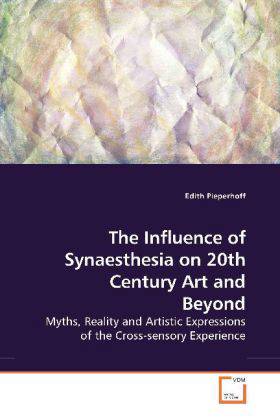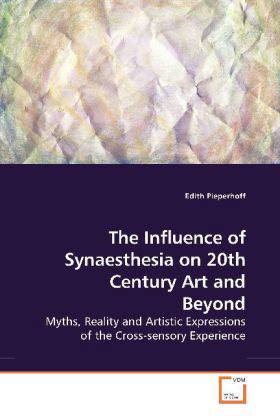
Je cadeautjes zeker op tijd in huis hebben voor de feestdagen? Kom langs in onze winkels en vind het perfecte geschenk!
- Afhalen na 1 uur in een winkel met voorraad
- Gratis thuislevering in België vanaf € 30
- Ruim aanbod met 7 miljoen producten
Je cadeautjes zeker op tijd in huis hebben voor de feestdagen? Kom langs in onze winkels en vind het perfecte geschenk!
- Afhalen na 1 uur in een winkel met voorraad
- Gratis thuislevering in België vanaf € 30
- Ruim aanbod met 7 miljoen producten
Zoeken
The Influence of Synaesthesia on 20th Century Art and Beyond
Myths, Reality and Artistic Expressions of the Cross-sensory Experience
Edith Pieperhoff
Paperback | Engels
€ 48,45
+ 96 punten
Omschrijving
The phenomenon of Synaesthesia, the seeing-of sounds or hearing-of-colours has probably always fascinated human beings,but it was not until the late 19th century that it became a serious topic of scientific exploration as well as an inspiration for poets, musicians and visual artists. The dialogue between science and art gave rise to various concepts about the unity of all senses and the possible connection to a higher consciousness. Early Modernist artists, most notably Vassily Kandinsky, aspired to create that unity of the sensual experience and thus to express the spiritual dimension of their art. Later research in neuro-science however, has lead to a de-mystification of Synaesthesia. The question arises weather Synaesthesia is still a relevant inspiration for artists in a time of high multimedia exposure. The exploration of that question is equally interesting for cultural historians, audio-visual artists, film-enthusiasts, neuro-scientists or people who see a clear soprano voice as a rich burgundy red.
Specificaties
Betrokkenen
- Auteur(s):
- Uitgeverij:
Inhoud
- Aantal bladzijden:
- 68
- Taal:
- Engels
Eigenschappen
- Productcode (EAN):
- 9783639158045
- Uitvoering:
- Paperback
- Afmetingen:
- 150 mm x 220 mm
- Gewicht:
- 110 g

Alleen bij Standaard Boekhandel
+ 96 punten op je klantenkaart van Standaard Boekhandel
Beoordelingen
We publiceren alleen reviews die voldoen aan de voorwaarden voor reviews. Bekijk onze voorwaarden voor reviews.









